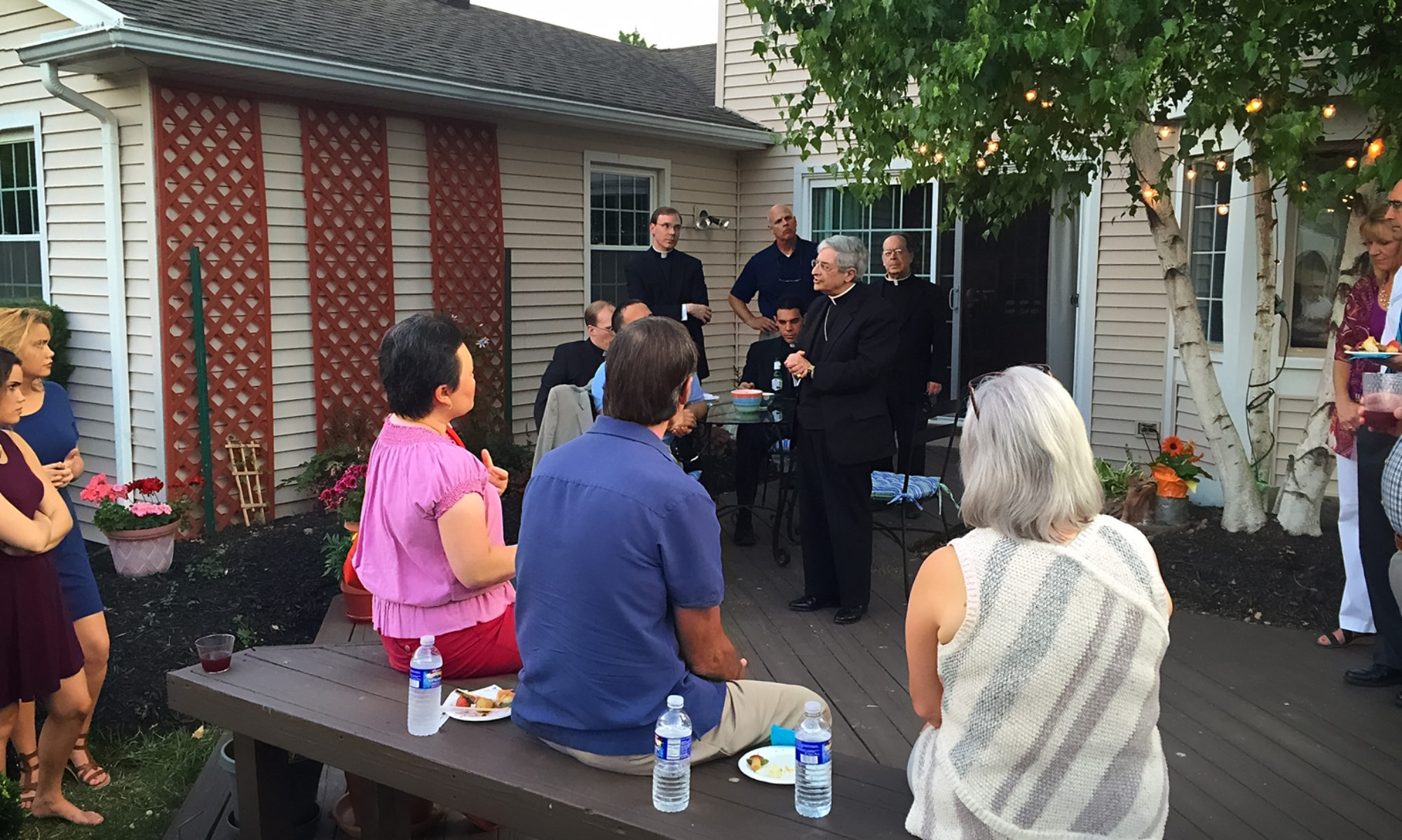VJC
We had a great turnout last night for our 2nd Virtual Journal Club! Thank you to everyone who joined us. The discussion was lively and very informative.
Here are some pics from the VJC!
Stay tuned, we’ll be announcing details for our next VJC soon!
Virtual Journal Club
I hope you see you at our Virtual Journal Club tonight, see details here.
Here is a list of references from tonight’s presentation
•Population prevalence of Down syndrome in England & Wales in 2011 https://www.nature.com/articles/ejhg2012294
•Perinatal Hospice – AAPLOG https://www.aaplog.org/wp-content/uploads/2015/07/AAPLOG-Practice-Bulletin-1.compressed.pdf
•Formal and Material Cooperation, Ethics & Medics, June 1995 https://www.consciencelaws.org/religion/religion002.aspx
•Scandal definition http://www.catholictheology.info/summa-theologica/summa-part2B.php?q=267
•Catholic Encyclopedia – Scandal https://www.newadvent.org/cathen/13506d.htm
•Eugenic Abortion in Iceland https://www.cbsnews.com/news/down-syndrome-iceland/
•Prenatal screening test characteristics https://www.ncbi.nlm.nih.gov/pmc/articles/PMC4144440/
•What Are Women Told When Requesting Family Planning Services at Clinics Associated with Catholic Hospitals? A Mystery Caller Study https://pubmed.ncbi.nlm.nih.gov/29024351/
•Dear mom with a prenatal Down syndrome diagnosis https://aaplog.org/from-lauren/
“Compassion and Choices”
The ironically- (and sadly-) named pro-suicide group “Compassion and Choices” is focusing their efforts on passing Physician Assisted Suicide legislation in a number of states, including New York. They will not rest, and so we must not either!
One great organization that will help keep you abreast of developments in the are is Patients Rights Action Fund. Check them out and consider donating.
Remember, those in favor of assisted suicide are tireless and committed to nothing short of open and free access to death on demand. In their own words…
Compassion and Choices Fall Magazine
We are committed to continuing and expanding these efforts. How will COVID-19 impact our ability to authorize medical aid in dying in more states in 2021? Increased competition from issues emerging as a result of COVID-19 and greater awareness of racial inequities will make it more challenging to get any law passed in the near term. However, the unfortunate reality is that large numbers of people have and continue to suffer lonely, isolated deaths. We have seen time and time again that when people experience firsthand the inhumanity of suffering at life’s end, our support solidifies, intensifies and grows.
This reality, along with the momentum we had coming into COVID-19 and a combined total of 50 years of experience successfully implementing medical aid in dying in 10 jurisdictions, leaves me feeling optimistic for the future. We can anticipate authorizing an average of one state per year, putting us on track to realize our strategic goal of ensuring that 50% of the population lives in a state where medical aid in dying is authorized and accessible by 2028. What states look the most promising for advancing medical aid in dying? Massachusetts lawmakers, for the first time ever, advanced their medical aid-in-dying legislation during COVID-19, voting it out of the Joint Committee on Health Care Financing. We are hopeful the state will authorize medical aid in dying in the near term. In terms of the rest of the country, I will be able to answer this question with more certainty on November 3, just after the election. I anticipate lawmakers sponsoring bills in approximately 20 states where we are organizing and working alongside coalitions to move legislation forward. The political climate and grassroots support are increasingly promising in nine of those states — Connecticut, Delaware, Illinois, Maryland, Minnesota, New Mexico, New York, Nevada and Virginia.
Last year, Oregon passed legislation to improve the existing bill. Do you anticipate other states following suit? Absolutely. We have conclusive data that the existing law is unnecessarily burdensome, and we will work with lawmakers in some states to begin to address this reality. Fundamental improvements include 1) the elimination of or ability for doctors to waive the waiting period for patients actively dying; 2) the inclusion of nurse practitioners and/or physician assistants as allowable practitioners; 3) a requirement that providers disclose their medical aid-in-dying policies, allowing patients to make informed decisions about where to access the care they want.





